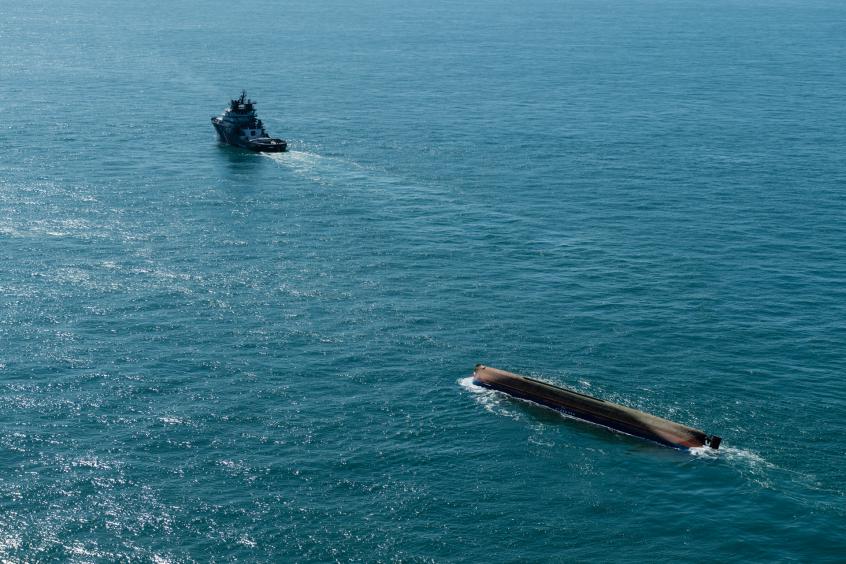Robin des Bois approves the safety decision of the maritime prefect of the Channel and North Sea to carry out with the Abeille Liberté an attempt to tow the overturned wreck of the Britannica Hav towards Le Havre harbour.
This is a new sign of breaking off. In the past, the wreck of the cargo ship would have been towed and somehow dumped, for example, on the side of the Casquets pit.
The doctrine of the harbour or refuge bay takes shape in France. It was applied for 2 container ships :
– the MSC Napoli towed and stranded in Lyme Bay in the United Kingdom in 2007
– the MSC Rosa M successively welcomed in the ports of refuge of Cherbourg and Le Havre in 1997.
If the bold towing of the wreck of the Britannica Hav comes to an end, technical and financial means will have to be mobilised without delay to raise the wreck. The Gardet & de Bézenac approved yard will be able to proceed with its demolition.
Taking into account the gravity of the event and the costs incurred, all the risks of pollution, “hooking” and collision with sunken or drifting metal waste, Robin des Bois equates the hasty return to Zeebrugge of the Belgian trawler Deborah to a deliberate desire to obstruct the investigation into the establishment of responsibilities. The Deborah, a 38 m long steel trawler, is responsible for ramming the Britannica Hav.
To our knowledge, this is the first time a fishing vessel has sunk a cargo ship after colliding. Usually, and unfortunately we can usually talk about cargo ships sinking fishing boats. We remember in this respect the sinking of the Klein Familie and her 5 lost at sea after a collision with the chemical tanker Sichem Pandora in January 2006.
 Towing of the wreck of the Britannica Hav © Marine Nationale
Towing of the wreck of the Britannica Hav © Marine Nationale
 Imprimer cet article
Imprimer cet article








